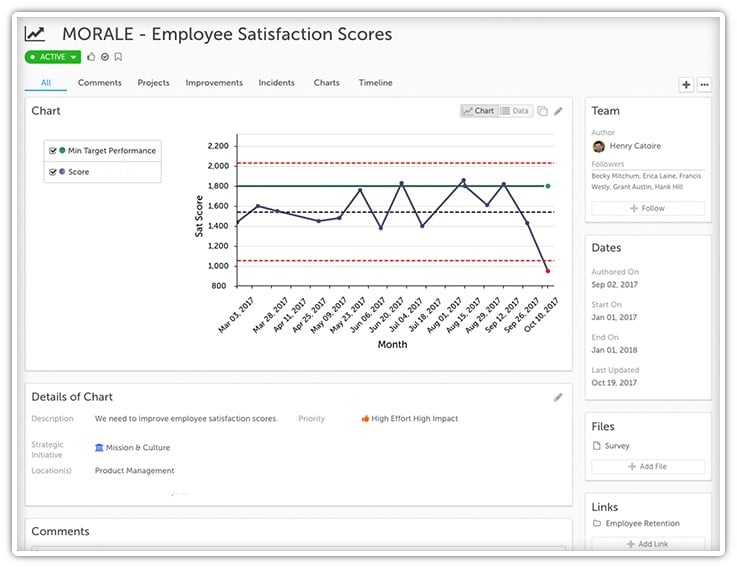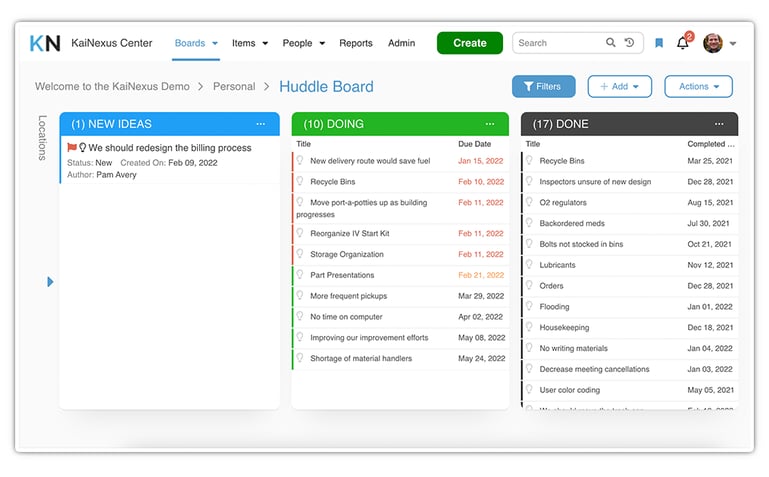 A while back, we wrote about some continuous quality improvement techniques that we love because they are easy but powerful. One of the most important realizations that people have, when they start to build an organization focused on excellence and constant improvement, is that the path is not complicated. It’s really all about getting the little things right and providing people with a structured way to think about incremental operational change. The original post contained some of our favorite tools. This one has a few more.
A while back, we wrote about some continuous quality improvement techniques that we love because they are easy but powerful. One of the most important realizations that people have, when they start to build an organization focused on excellence and constant improvement, is that the path is not complicated. It’s really all about getting the little things right and providing people with a structured way to think about incremental operational change. The original post contained some of our favorite tools. This one has a few more.
A3 Problem Solving
A3 is a structured problem-solving technique that was developed at Toyota. It is popular with Lean organizations, but it useful with or without that approach. A3 gets its name from the size of the one sheet of paper that is used to create the A3 report. (The European A3 paper size is close to US letter sized paper.) The A3 report contains all of the results of a PDSA or DMAIC cycle (more on DMAIC in a minute). A3 projects usually involve standardization, small incremental improvements, or documentation. Limiting the report to one page helps teams keep focused and communicate clearly.
DMAIC
DMAIC is an improvement cycle similar to PDSA, but with more of a focus on measurement and sustaining improvements over the long term. The acronym stands for Define, Measure, Analyze, Improve, and Control. The DMAIC is applied to an existing, documented standard work in order to generate rapid and lasting results. There are only five steps to this simple approach, but when executed correctly, only smart and helpful improvements make it through the analysis and into production.
Hoshin Kanri
I questioned whether to include Hoshin Kanri on a list of simple improvement techniques because there is quite a lot to it, but ultimately, the principles are as straightforward as it gets. Hoshin Kanri is a strategic planning process that sets the direction of the organization by choosing a few breakthrough goals. Once that is complete, leaders break them down into annual objectives and cascade them down through the organization until everyone is aligned. While there are seven steps to the process, there’s nothing complicated about it.
Kanban
Kanban is the very definition of simplicity. It is merely a method of giving workers visual cues about the state of work-in-progress. In factories, this might mean cardboard signs that are used to indicate when inventory needs to be replenished. In offices and healthcare settings, people use digital Kanban boards to visualize each element of work as it moves through a process or across multiple processes. This approach makes it easy for everyone to see when there are backlogs or when required process inputs are not ready, maximizing flow and pull.
Control Charts
Control charts are a rather scientific way of analyzing process variation, but they are not difficult at all to use. The results of a process are plotted over time and reviewed to distinguish between common cause (expected) variation and special cause (out of control) variation. Setting them up and learning what to look for can be a little tricky, but I include them on our list of simple tools because they make the job of managing much easier. Leaders are able to sort out what is “noise” in the process results and what indicates a significant change in process behavior that requires attention.

Digital Huddle Boards
Daily huddles are an effective way to keep teams focused on the improvements planned for that day. They allow employees to offer input and track the progress of each project in play. Digital huddle boards make all of that information visible to those involved whether they are physically present or not. They also make it possible for leaders to follow the progress of improvement work across the entire organization.

Improvement Broadcasting
One of the most amazing things about embedding improvement into the culture of an organization is that each positive change leads to more. When people know that their input and effort are welcome and appreciated, they can think even more creatively and take action more confidently. That’s why improvement broadcasting is such an important technique. When you let everyone know that someone has achieved success and share what that means in terms of the key performance indicators, you set the stage for even more engagement.
You might not immediately need each of these easy, but useful improvement techniques, but it is absolutely worth giving some of them a try. We’ve included links to longer posts about each one so you can dig into the details and give it a go.




Add a Comment